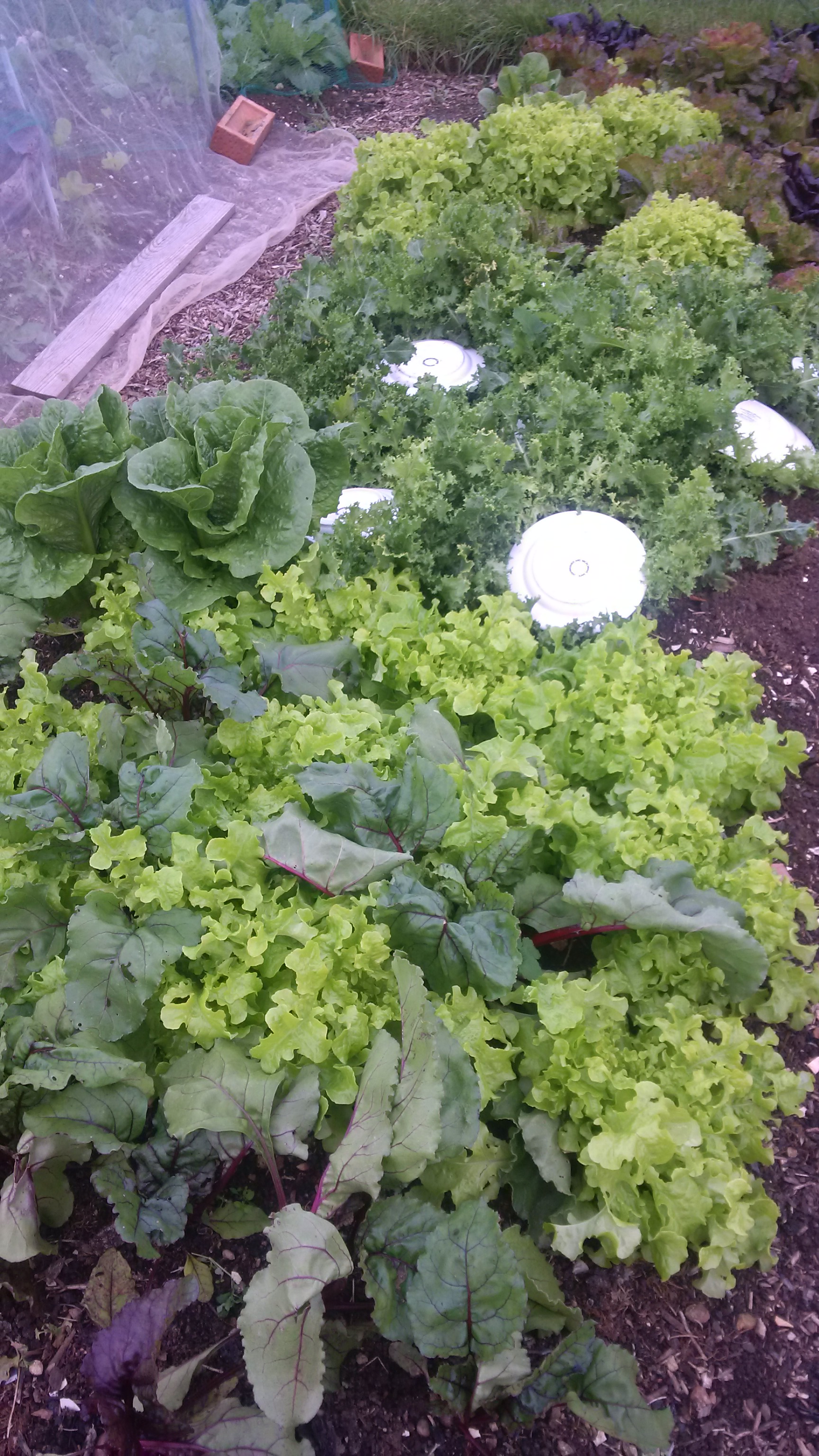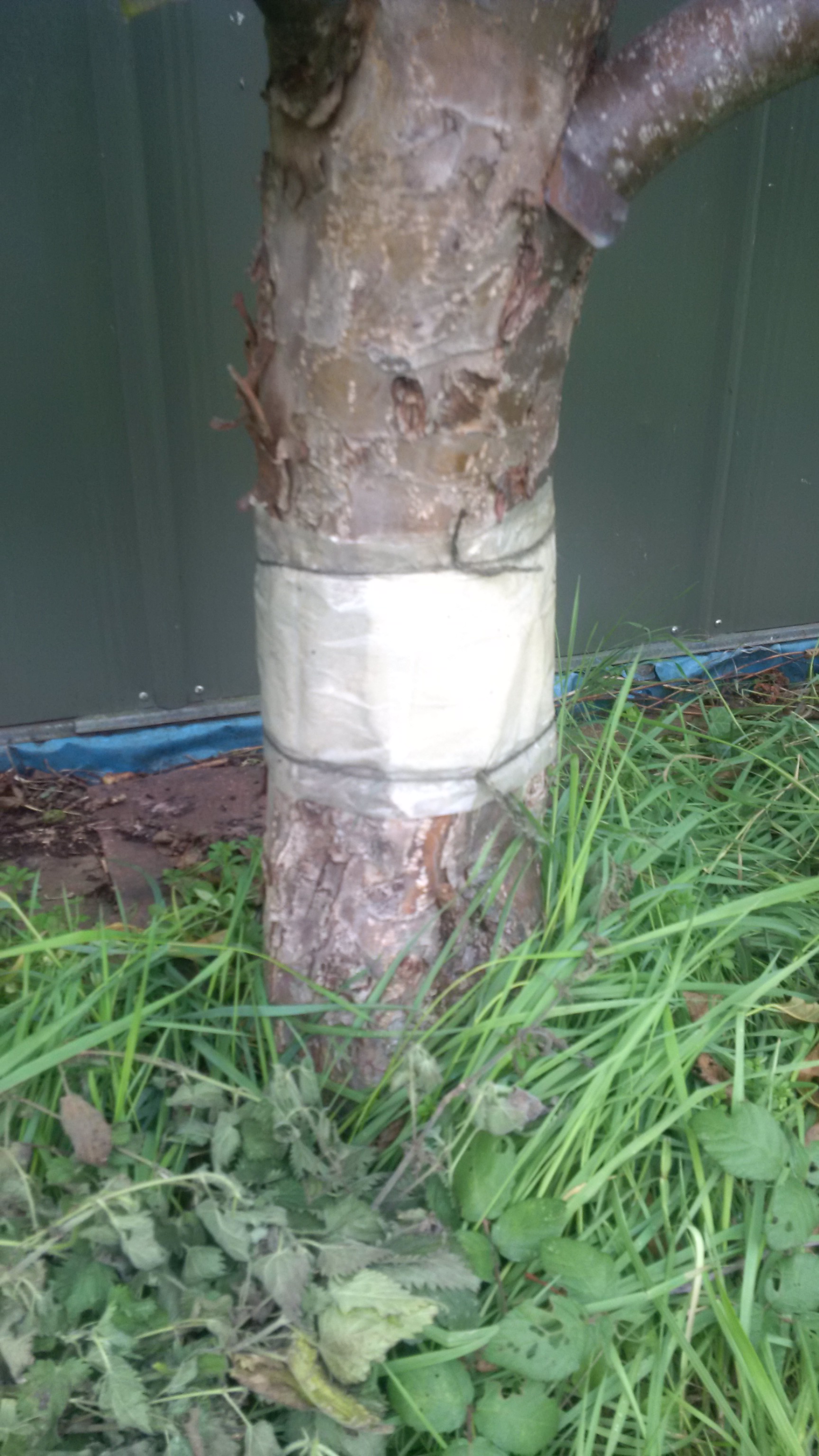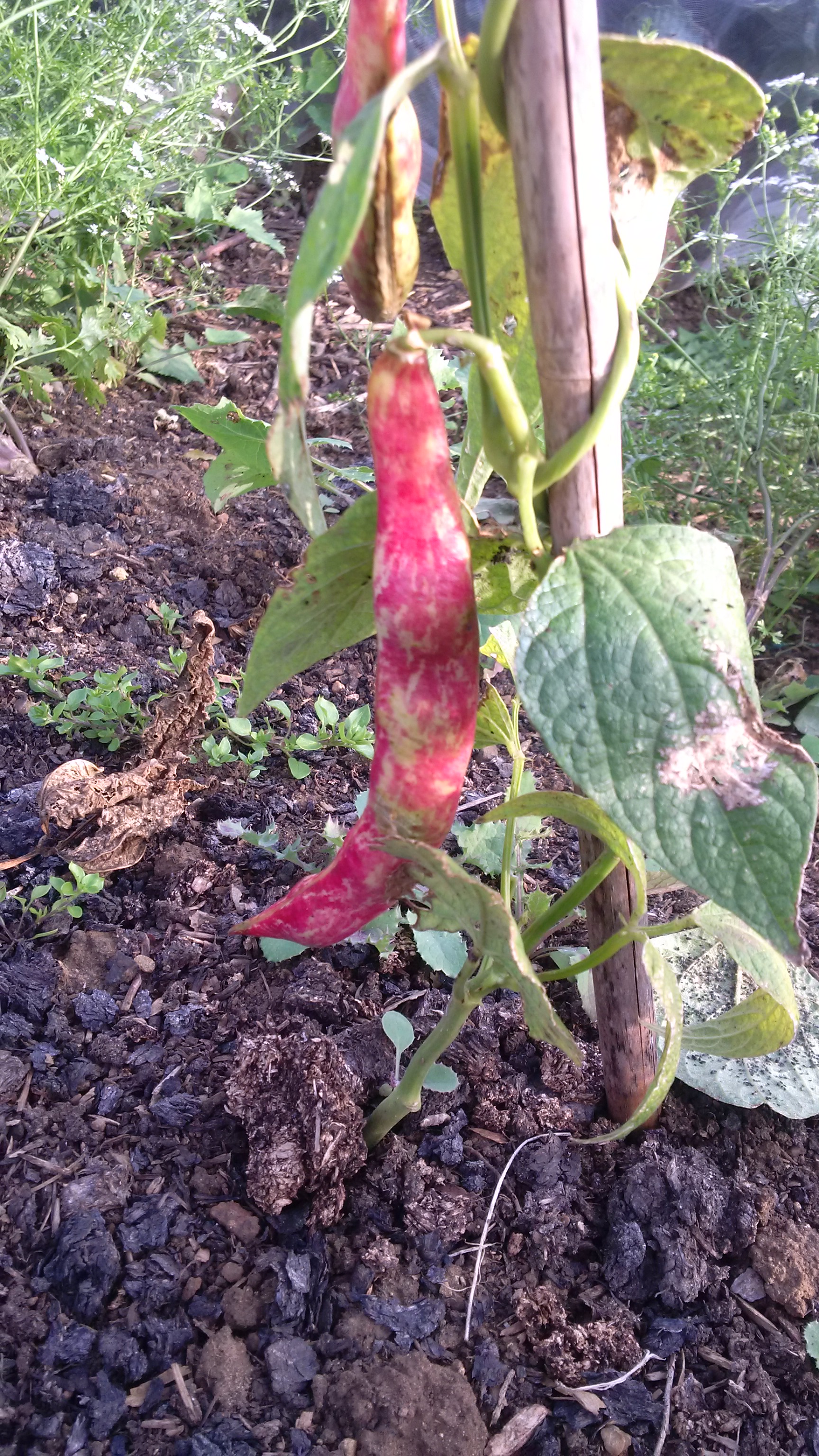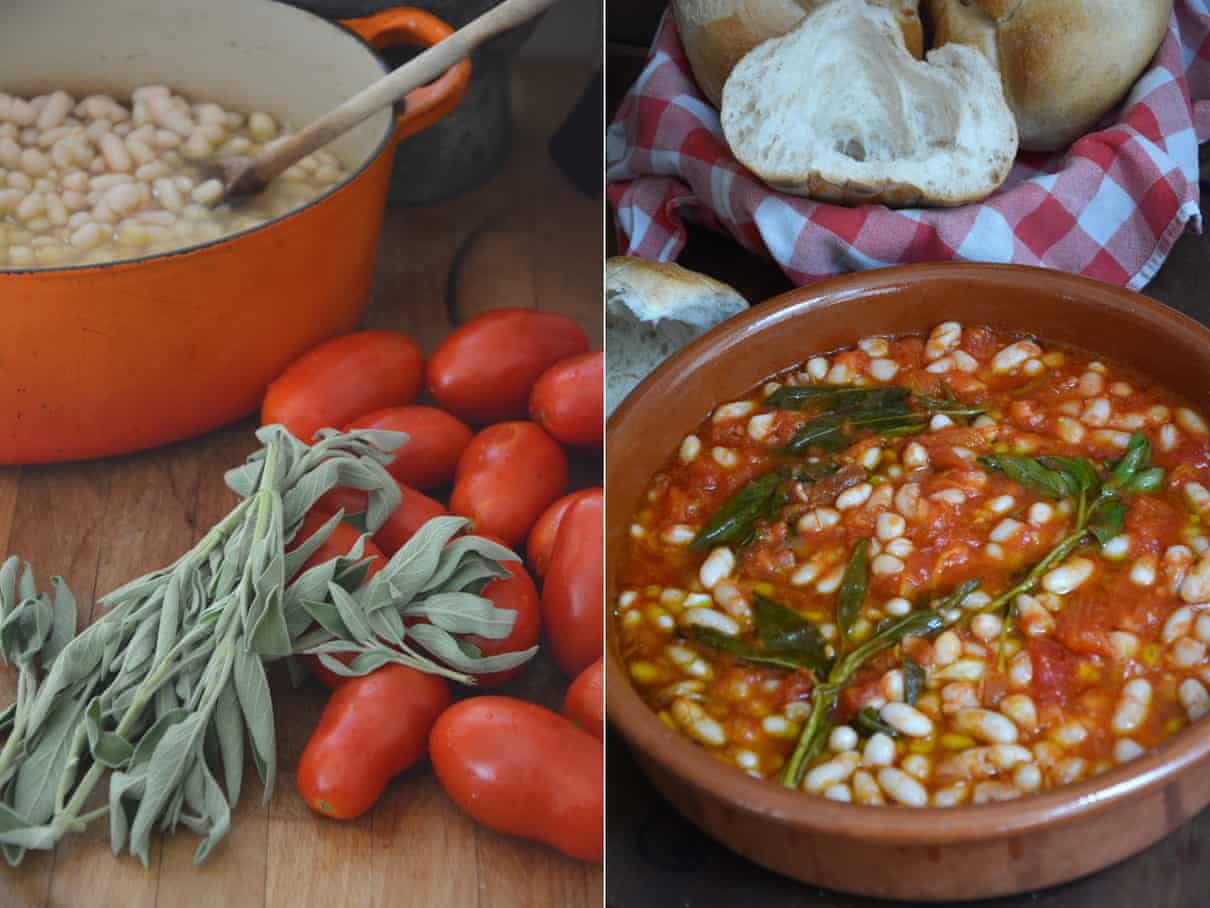It’s very definitely autumn on the allotment now although the last lingering memories of summer survive in the greenhouse; tomatoes, still in production but much slower to ripen, and peppers and chilli peppers seem to find a new lease of life in the early autumn and are flowering like its Springtime! The basil is just about hanging in there but it really doesn’t like the weather much now… Gradually the greenhouse is being turned over to salad crops for the winter as the tomatoes come out with lettuce, endives, rocket and Pak Choi taking their place. Outside, the squash plants have had nearly all their foliage removed to allow the sun to ripen their skins which will mean they keep longer in storage. Soon they will be brought indoors and left on a sunny windowsill to fully dry out and harden.

Outdoor salad leaves are growing well as you can see from the picture. The small plates on the endives are keeping the hearty growth out of the light in order to blanch them making for a more tender and less bitter leaf. The lettuce were planted in between some beetroot which will probably not form roots now – but the leaves will go in the salad or be stir fried with some olive oil and lemon juice for a tasty lunch one day.
The start of October is the time for the top fruit grower to apply grease bands to the fruit tree trunks. These are sticky paper bands which are tied on to encircle the trunk and reduce the numbers of winter moth caterpillars on the trees. The wingless female moths are prevented by the sticky paper from climbing the tree and laying eggs. This in turn reduces the number of caterpillars in the Spring – left unchecked they would feed on the fruit buds and reduce the amount of fruit produced.

The Howgate Wonder cooking apples were harvested this week. It’s a large cooking apple – nowhere near as good a flavour as the Bramley seedling but, oh boy, they are really big apples! They are now in the apple trays in the shed but I’ll try to remember to show you a photo of them next week.
We have grown borlotti beans for quite a few years now, not because they are difficult to come by in the shops but because fresh beans really do taste best and borlotti bean pods look so attractive with their red and green pods turning to red and cream colours as they ripen. Not everything has to be intensively productive and although we enjoy only a little produce from the borlotti beans, it’s a delight to grow them anyway!

When you have a lot of French beans which you didn’t pick and they have ripened in the pod to make white beans here’s the absolutely best thing you can do with them – from Rachel Roddy’s column in the Guardian
White beans with tomato and sage (fagioli all’uccelletto)

600g cooked white beans
600g ripe tomatoes
Olive oil
2 garlic cloves, unpeeled, gently squashed
Sage
Salt
If you are using dried beans, you will need 250g. Soak overnight, drain, cover with fresh water, add a pinch of salt, bring to just before it boils, then reduce to a simmer for about an hour, or until tender. If you are using tinned beans, you will need two tins, drained.
Peel the tomatoes by scoring a cross in the base, plunging them into boiling water for a minute, then into cold water, at which point the skins should slip off. Cut roughly, discarding any tough bits.
In a heavy-based pan or terracotta pot, warm a good amount (60ml) of olive oil and garlic as slowly and gently as possible. Add the tomato, sage and a pinch of salt, and raise the heat so it bubbles for a few minutes, pressing the tomato with the back of a spoon to break it up.
Add the beans, stir, then reduce to a simmer for 20 minutes, or until the tomato has formed a rich sauce and the beans are a red-tinted colour. If at any point the pan looks dry, or the sauce too thick, add a little water.